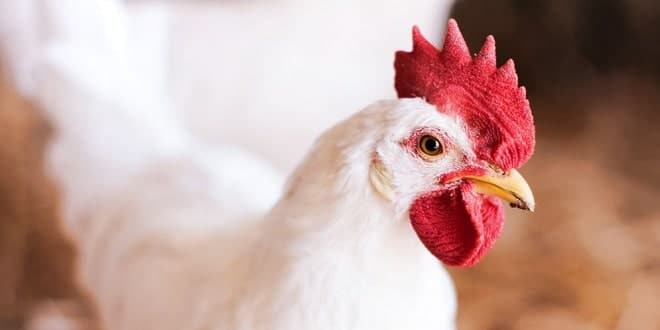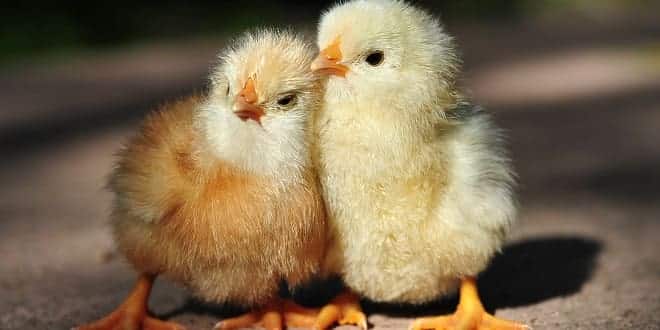Organic Poultry Production ( Ken W. Koelkebeck )
•Growth of Industry
•1997-2001 – surge of certified organic poultry production
•Certified organic layers 537,826 (1997) to 1.6 mil (2001)
•Certified organic broilers 1997-38,285 ® 3.3 mil (2001)
•Certified organic turkeys 1997-750 ® 98,000 (2001)
•2002 – USDA National Organic Program www.ams.usda.gov/nop/indexIE.htm
•National standards dictate how broilers, turkeys, layers and others are to be managed and raised
•Standards – poultry not required to have access to pasture, but must be given freedom to:
1) exercise
2) access to fresh air
3) exposure to direct sunlight
•Birds can be “housed” if weather is bad – exception
•Organic producer will pasture the birds and/or house in semi-confinement and temporary confinement
•Producers must create “Organic System Plan” if seek certification
1. Comply with national rules
2. Describe how to manage flock, house, feed, waste, handling, health, welfare, and maintain records
•Resource – National Center for Appropriate Technology (NCAT) Organic Livestock Workbook -A Guide to Sustainable and Allowed Practices
From: Agricultural Technology Transfer for Rural Areas (ATTRA)
PO Box 3657
Fayetteville, AR 72702
(800) 346-9140
www.attra.ncat.org
www.attra.ncat.org/attra- pub/PDF/livestockworkbook.pdf
•HUSBANDRY AND MANAGEMENT
•Birds: Day-old chicks, all species and breeds
•Land: Outdoor access (land must be organic)
•Housing: Semi-confinement or pasture
•Density: Allow for natural behavior
•Equipment: electric fence, poultry netting, feed troughs, water fountains
•Labor: Keep accurate records
•Operation: Year-round
•Advantages: Premium prices for products, environmentally friendly, endorsed by animal rights groups
•Disadvantages: Record keeping, regulated management practices, higher feed costs
•BIRDS
•Purchase day-old chicks from conventional stock
•Breed and hatch own
•Purchase started pullets, but must come from certified organic breeders
•Breed selection is vital to success
•Nat. Organic Standards prohibit use of conventional medicines/treatments – so get a breed that is hardy
•RAISING BIRDS ON PASTURE
•Standards – “living conditions which accommodate health and natural behavior of animals”
•Pasturing is compliant, but not required
•Outdoor access with minimum plant cover are compliant
•Outdoor cement yards are not compliant
•Many producers keep birds on pasture for 6 months
•If birds on pasture, have to follow the National Organic Standards for pasture seeding
•Use organic seed where available and approved practices to control weeds
•Organic buyers of birds or eggs may have own guidelines
•EQUIPMENT AND SUPPLIES
Checklist
• Feeders • Artificial lights
• Waterers • Electric fence
• Litter • Approved cleaners
• Nest boxes • Organic certified seed-on pasture
• Source: Organic Materials Review Institute (OMRI) – www.omri.org
Midwest Organic and Sustainable Education Service (715) 772-3153
www.mosesorganic.org
•HOUSING
•Certain living conditions
• Exercise • Provide for
• Escape bad weather natural behaviors
• Provide fresh air • Move birds without injury
•Semi-confinement shelters
• Equipped with access doors so birds can move freely between inside and outside
•Some buyers may dictate stocking density -standards do not stipulate
•If build a large or long house for your birds, you should have many access doors – the number of doors not stipulated in standards
•Should check with your local certifier
•HOUSING FOR LAYERS
•Lighting – standards do not include guidelines for artificial lighting or access to natural light and dark cycles
•If use artificial lighting to induce molting should check with local certifier if allowed
•It is of course important to provide artificial light in the fall and winter months to stimulate good egg production
•Induced molting may be looked upon buyers of eggs as “inhumane”, so check with your local certified if you can molt a flock
•Use of cleaning products
• It is standard practice to clean and disinfect broiler, turkey, and layer houses in between flocks to prevent buildup of pathogens
•Be sure to check the list of allowed and prohibited substances for cleaning, disinfecting, and sanitizing
www.ams.usda.gov/NOP/NationalList/ListHome.html under “Processing Materials Decisions”
•The Organic Materials Review Institute (OMRI) screen products to use – www.omri.org
•BIRD HEALTH/WELFARE
Disease Prevention Plan
•Can include – sanitizing incubators
– disinfecting brooder houses
– nutritionally balanced feed
•Routine vaccinations are permitted for common diseases such as Marek’s Newcastle, and Coccidiosis
•Sick or injured birds – use of “alternative medicine” is encouraged
•If no other recourse, then antibiotics and other conventional treatments can be used
•Finding a veterinarian that is sensitive to organic poultry raising is a “must”
Health Resources:
1. Remedies for Health Problems of the Organic Laying Flock – Kingbird Farm – (607) 657-2860 karma@kingbirdfarm.com
2. The Chicken Health Handbook – Storey Books – (800) 441-5700 www.storey.com
Processing
References:
Organic Meat and Poultry
Processing Basics
www.mda.state.mn.us/esap.organic
Home Processing of Poultry
www.extension.umn.edu
References:
Commercial Egg Production and Processing
http://ag.ansc.purdue.edu
Processing Farm-Raised Poultry
www.oznet.ksu.edu
Organic Poultry
•For poultry to be sold as “certified organic”, it must be processed in facilities certified by an accredited certifying agency
•Processing plants currently meeting USDA regulations can easily meet additional organic requirements
•Poultry and eggs accepted by plant must be certified organic
•Appropriate clean outs must be done prior to processing organic poultry or eggs
•Packaging must be free of synthetic fungicides or preservatives
•Consumer & Sales Wants/Needs
•PRODUCING EGGS
•IL
•Limited License – Producer dealer sells graded eggs produced by his own flock of 3,000 birds or less – $15
•Full License – Producer dealer sells graded eggs produced by his own flock of 3,001 birds or more – $50
•RAISING POULTRY
•IL
•Producer needs a license if produces and sells over 5,000 birds a year
•www.agr.state.il.us –
•Meat and Poultry Inspection Act
…



